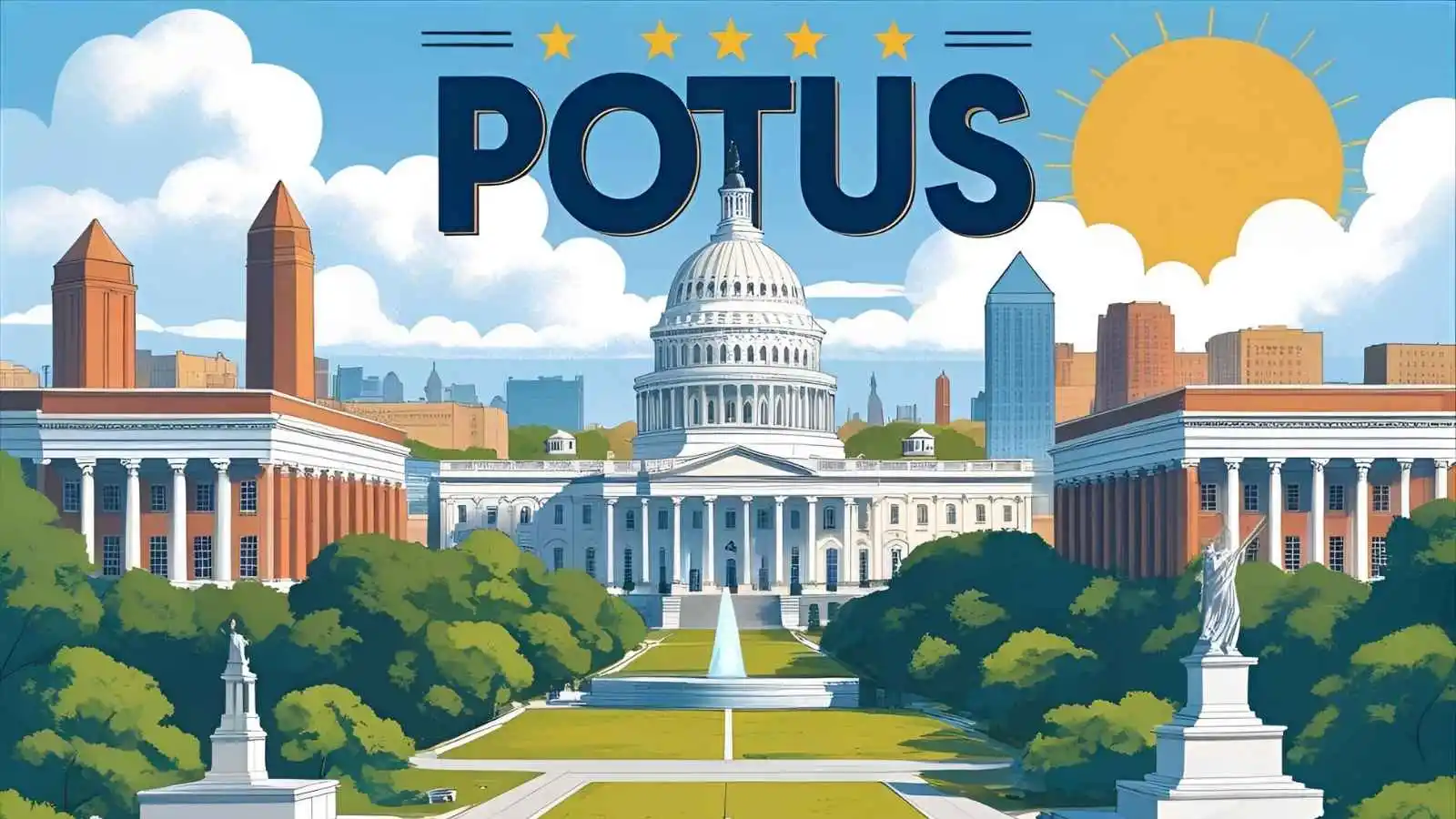Ever seen “POTUS” in a tweet or headline and wondered what it actually means? You’re not alone. While it might look like some high-tech code or new slang, POTUS is one of the most powerful acronyms in the English language today—and it’s deeply rooted in political communication.
But there’s more to it than just “President of the United States.” In 2025, language has evolved, digital communication has shaped tone, and even formal acronyms like POTUS are used in text messages, professional emails, and memes alike. This article will dive deep into what POTUS means, how it’s used, and how to replace it with smarter, more contextual alternatives depending on your audience.
You’ll also learn 10 powerful alternatives to the phrase “POTUS” that work in both formal writing and casual conversations—along with usage tips, examples, and how tone changes everything.
Let’s break it all down.
🧠 What Does POTUS Mean?
POTUS is an acronym that stands for President of the United States.
This term is widely used in:
- News media headlines
- Political commentary
- Governmental and diplomatic communication
- Social media (especially Twitter/X)
- Casual references to the sitting U.S. president
It’s often used to save space or add a more modern tone to digital or informal writing.
Example:
“POTUS just landed in Berlin for the G7 Summit.”
🕰️ A Brief History of the Term “POTUS”
The acronym POTUS was first used in telegraph codes in the 1890s to save time and space during long-distance communication. It gained renewed popularity in the digital age—especially during the Obama presidency, where social media became central to communication strategies.
By 2025, it’s a fully integrated acronym in modern English that’s recognizable across generations and media outlets.
📲 How Is “POTUS” Used in 2025?
In 2025, “POTUS” isn’t just used in newspapers—it’s in Instagram captions, emails, and even AI chat prompts.
✅ Common Use Cases:
- News Headline:
“POTUS Signs Climate Agreement in Paris.” - Social Media:
“Spotted: POTUS walking his dog outside the White House 👀🐶” - Governmental Communication:
“Awaiting POTUS approval before the legislation moves forward.” - Satirical Content or Memes:
“POTUS when you forget to file taxes: 👀” - Academic or Analytical Writing:
“The POTUS doctrine during the 2020s signaled a shift in transatlantic policy.”
🧭 The Tone Behind “POTUS”: What You Should Know
Even though it’s a standard abbreviation, POTUS carries a tone of seriousness or authority. However, depending on the context, the tone may shift:
| Tone | Example | Meaning |
|---|---|---|
| Formal | “POTUS announced a joint defense agreement.” | Official, respectful |
| Informal | “POTUS be looking stressed 😩” | Casual, humorous |
| Ironic/Satirical | “POTUS solving global warming by tweeting. Impressive.” | Sarcastic, political commentary |
💡 Note: Avoid using “POTUS” in non-U.S. contexts unless the reference is specifically to the President of the United States. Misuse can signal inexperience or bias in international communication.
🤝 What Does “Stand For” Mean in Text?
In text or written conversation, “stand for” means:
“What does it represent?” or “What is the full form of this abbreviation?”
So, when someone asks:
“What does POTUS stand for?”
They’re really asking:
“What is the meaning or full form of POTUS?”
This phrasing is often used with acronyms (like POTUS, NATO, or NASA) and also with values (e.g., “What do you stand for?”).
🗣️ How to Ask or Explain “POTUS” in a Natural Way
Instead of simply saying, “It means President of the United States,” there are more fluid, polite, and professional ways to say it:
- Formal:
“POTUS is an acronym for ‘President of the United States,’ commonly used in political discourse.” - Informal:
“POTUS just means the U.S. president—it’s kind of like shorthand.” - Conversational/Explanatory:
“That’s just an acronym. It stands for ‘President of the United States.’ People use it a lot in news or on Twitter.”
🧾 10 Professional & Casual Alternatives to Saying “POTUS”
Here are 10 alternatives to the term “POTUS” you can use depending on the tone, setting, and audience:
1. President Biden / President [Last Name]
➡️ Best For: Formal writing, diplomatic language
✅ Example: “President Biden addressed the nation this morning.”
2. The Commander-in-Chief
➡️ Best For: Military or policy-focused writing
✅ Example: “As Commander-in-Chief, he has final authority over U.S. military actions.”
3. The U.S. President
➡️ Best For: International or non-American audiences
✅ Example: “The U.S. President met with leaders of the ASEAN nations.”
4. The White House
➡️ Best For: When referring to actions made by the presidency, not the person
✅ Example: “The White House has issued a new statement on energy policy.”
5. The Office of the President
➡️ Best For: Administrative or governmental tone
✅ Example: “The Office of the President has initiated a review of federal protocols.”
6. Head of State
➡️ Best For: Diplomatic, comparative political analysis
✅ Example: “The head of state attended the economic summit in Tokyo.”
7. Executive Branch Leader
➡️ Best For: Academic or legal contexts
✅ Example: “As the executive branch leader, they oversee all cabinet departments.”
8. Presidential Administration
➡️ Best For: Referring to policies rather than the person
✅ Example: “The Biden administration introduced new tech regulations.”
9. National Leader
➡️ Best For: Globalized, cross-cultural conversations
✅ Example: “The national leader addressed concerns regarding AI legislation.”
10. America’s Chief Executive
➡️ Best For: High-level commentary, press releases
✅ Example: “America’s chief executive emphasized unity in his address.”
🧠 Why Knowing These Alternatives Matters
Using the right term doesn’t just show good grammar—it shows cultural awareness, professional tone, and intentionality in communication.
Whether you’re a student, a journalist, or someone writing on international affairs, the ability to select the best alternative to “POTUS” ensures clarity and respect for context.
🧠 Real-World Example Scenarios (2025 Edition)
Let’s look at how your choice of language changes tone and clarity.
🔹 Scenario 1: Writing an academic paper
❌ “POTUS launched a digital health initiative.”
✅ “President Biden launched a digital health initiative aimed at expanding telemedicine in rural areas.”
🔹 Scenario 2: Casual tweet
❌ “President Biden did the thing again.”
✅ “POTUS did the thing again. 😂 #ClassicBiden”
🔹 Scenario 3: Corporate internal communication
❌ “POTUS mentioned the tech sector today.”
✅ “The U.S. President made remarks on tech regulation that could affect our sector.”
🔄 Conclusion
The acronym POTUS might seem small, but it carries significant weight, history, and meaning—especially in 2025, where global conversations happen in 280-character bursts and professional communication must be sharp and culturally tuned.
To recap:
- POTUS stands for President of the United States
- It’s used in both formal and informal writing
- There are better alternatives depending on tone, purpose, and audience
- Always consider tone and clarity when choosing how to refer to national leaders
Language isn’t just about being understood—it’s about being understood correctly.










